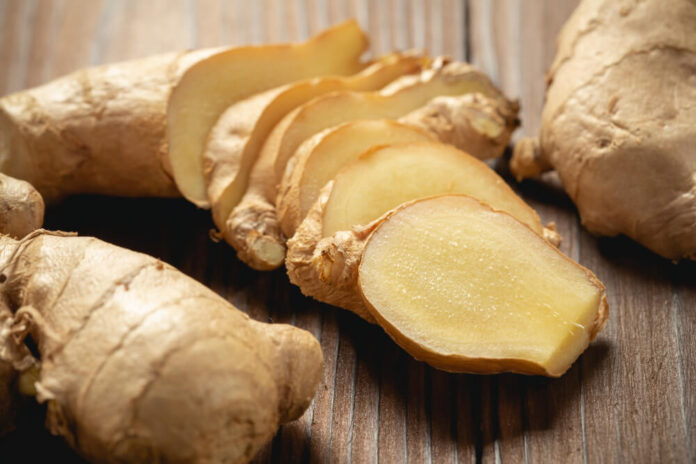If you’ve noticed ginger prices skyrocketing at your local grocery store, you’re not alone. A global ginger shortage is unfolding right now, impacting markets worldwide. This shortage isn’t just a bump in the road—it’s a significant event influencing the availability and price of a common kitchen staple. Whether you’re spicing up your favorite dish or brewing ginger tea to fend off a cold, this spicy root is more than just a condiment. Let’s explore how this shortage impacts us and unravel the causes behind it.
Causes of the Shortage
Reduced Production in Key Regions
Peru, a significant player in the global ginger market, has seen a reduction in plantings. Despite ambitious plans for a 10-15% increase in production this season, demand seems poised to absorb these gains. A complex mix of factors influences Peru’s reduced output. Farmers are cautious given the turbulent market conditions of the past year. The uncertainty surrounding global demand and market prices has led to this conservative approach.
Impact of Weather Events
The unpredictable nature of weather, especially with recent harsh conditions, heavily affects ginger production. Typhoons and the daunting presence of El Niño have struck producing regions, damaging crops extensively. These vivid natural phenomena create chaos, leading to unpredictable yields. The severe weather has not only crushed ginger fields but also cast long shadows on future harvests.
Disease Impact on Ginger Crops
In regions like Costa Rica, a bacterial disease has compounded the production woes. This disease has spread across plantations, impacting the quantity and quality of output. Ginger crops are vulnerable to pests and diseases, and managing these can be challenging. Farmers are finding it tough to control the situation, further dwindling the already affected supply.
Supply and Demand Factors
Current and Expected Ginger Supply
Despite Peru’s expected increase in production, the shortage isn’t resolved. The global appetite for ginger seems insatiable. As demand continues to rise, especially during specific seasons, even increased production may not suffice. The world craves more ginger than can be produced, testing growers’ capabilities and forcing a re-evaluation of supply dynamics.
Seasonal Demand Patterns
Northern Hemisphere winter heralds a spike in ginger demand. As temperatures drop, our desire for comforting ginger-spiced food and drink rises. Many households turn to ginger for its reputed health benefits during the colder months. This surge in demand during winter months strains the already tight supply chains, as producers strive to meet this increased need.
Market Impacts
Price Fluctuations
Ginger prices are soaring. Reports indicate that prices have tripled compared to previous years, an alarming trend for consumers and businesses alike. These increases reflect both the shortage and the intense demand, driving prices to uncharted heights. Such price hikes lead communities and industries to adjust and adapt, seeking alternative solutions.
Export and Import Adjustments
Peruvian ginger exports have plummeted by 43%, a staggering figure with global implications. To mitigate the supply gap, buyers are turning to Chinese and Brazilian ginger as alternative sources. The shift in sourcing is a testament to the adaptability of businesses in the face of scarcity. However, these adjustments are not without challenges, as logistic hurdles and quality variations influence decisions.
Regional Implications
Major Markets for Ginger
North America and Europe stand out as significant consumers of ginger. These regions are key markets for Peruvian ginger, supplying households and businesses throughout the year. As the shortage unfolds, these areas face direct consequences. The reliance on imported ginger necessitates exploring other sources, injecting elements of uncertainty and risk into operations.
Response in Different Regions
China has seized the moment, increasing shipments to Europe, eager to fill the void created by Peru’s decreased exports. Meanwhile, South Africa anticipates a promising ginger season beginning in March. Optimism is high as growers in these regions sense the opportunity to meet global demand and reap the rewards.
Industry Responses and Innovations
Adaptations in Trade and Imports
Countries look overseas, sourcing ginger from Asia to counteract local shortages. Imports from China, Vietnam, and Indonesia are essential to stabilizing supply. These shifts bring logistical complexities and opportunities for businesses to adapt, ensuring ginger remains on shelves for all to enjoy.
Technological and Production Advancements
The shortage has prompted conversations about the future of ginger production. Advances in technology and farming practices could revolutionize how ginger is grown, harvested, and processed. From improved disease management techniques to innovative cultivation methods, the industry is poised for transformation. Stakeholders are likely to invest in these technologies, anticipating long-term benefits.
Conclusion
The global ginger shortage illustrates the delicate balance of supply and demand in agricultural markets. As the shortage unfolds, prices fluctuate, trade routes shift, and production capabilities undergo scrutiny.
While the road ahead is challenging, prospects of innovation and adaptability offer hope for a brighter future. As growers, traders, and consumers navigate this time, lessons learned will influence the industry, shaping how ginger finds its way into our kitchens around the world.

